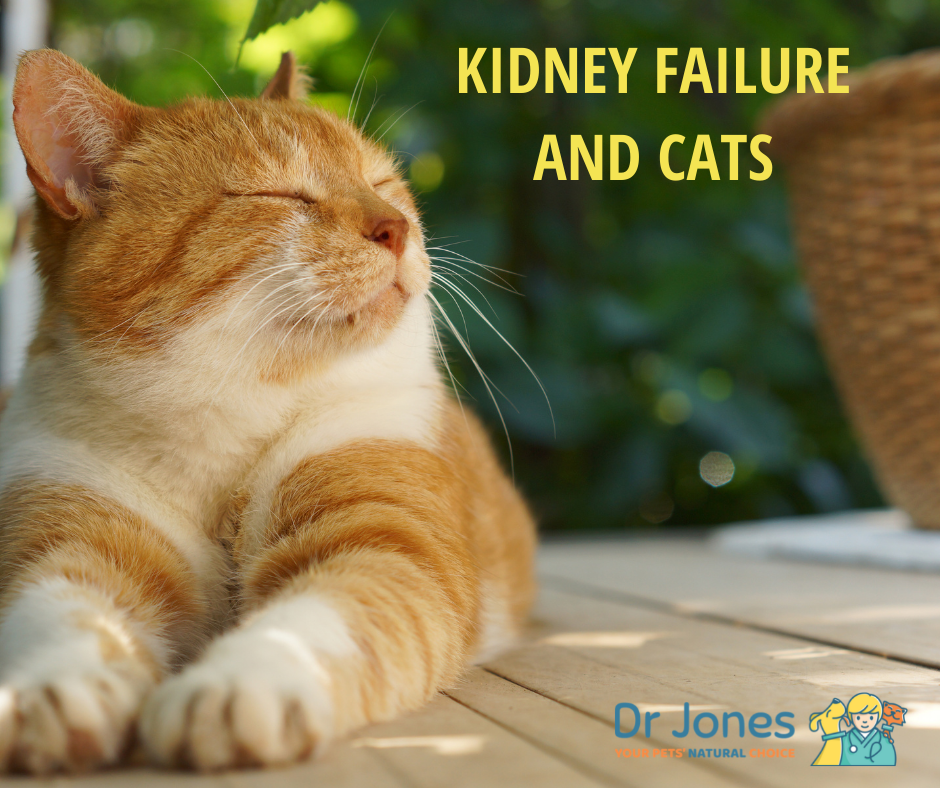Kidney Failure and Cats

SIGNS
Your cat is drinking more water and urinating more often. Your pet may be losing weight, specifically loss of muscle mass, as the kidneys lose protein. As kidney failure advances, your pet may become weak due to anemia.
CAUSES
Decreased appetite due to a buildup of toxins in the blood stream. In advanced cases, he will be dehydrated and completely off food. In some pets, kidney disease causes elevated blood pressure, which may affect his eyesight
If your cat has Kidney Failure, most Veterinarians will advise that you place your cat on a low protein diet. Yet, there are no studies showing that restricting protein will prevent further deterioration of kidney function.
In fact Veterinary Cat Specialists are now advising to not restrict protein – they are advising to maintain protein levels and restrict phosphorus, the nutrient in animal protein that is damaging the Kidneys.
SOLUTIONS
FLUID, FLUID, FLUID.
The most important thing that you can do for your pet with renal failure is to maintain adequate hydration. Offer lots of fresh water. If your cat is not a great water drinker, then make the switch to canned food.
Learn how to give subcutaneous fluids to your cat which can also help flush out the kidney toxins. I have a video showing you how to do that here: https://www.youtube.com/watch?v=Sp_C_EkMEy4&t=1s
PROBIOTICS.
Azodyl is a natural probiotic which metabolizes and flushes out uremic toxins in the bowel. They slow down uremic toxin buildup in the blood and helps prevent further kidney damage. The Azodyl dose is 1 capsule per 10 lbs daily, to a maximum 4 caps per day.
PHOSPHORUS REDUCTION.
In early stages of Kidney Disease, the single biggest mineral which damages the kidneys is phosphorus. This mineral speeds up destruction of the remaining kidney cells. Feed a diet lower in phosphorus and use phosphorus binders.
ALOH.
Aluminum Hydroxide (ALOH) is a phosphorus binder – it is odorless and tasteless and can be mixed with food (it must be administered with food). ALOH dose is ¼ teaspoon per 10 lbs daily.
ADD SOME TUMS.
Many pets with chronic kidney failure get high phosphorus levels, which can cause a whole host of problems, making your pet feel even worse. A safe, effective treatment is to add Calcium Carbonate found in Tums. The dose is 1/4 tab (650 mg) per 10 lbs if body weight twice daily.
ANTACID.
Famotidine (Pepcid) is a very safe OTC antacid that works very well in cats. The average cat dose The dose is 1/4 tab (2.5mg) per 10 lbs body weight twice daily.
NATURAL ANTACID for CATS
SLIPPERY ELM has been showing to be very effective for cats with CKD and helping them deal with the upset stomach that results in kidney failure. A typical cat dose is one 400mg capsule/day sprinkled in their food. It has been shown to be very safe for cats and very effective.
Best Wishes,
Dr. Andrew Jones, DVM
Is there a negative to giving aluminum hydroxide “Phos Bind” to 17yr old cat for kidney disease? I purchased but now am worried after reading some literature on this problem especially “brain issue”.